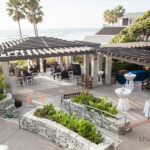REGION — The San Onofre Nuclear Generating Station only has four more canisters of spent nuclear fuel to put away in its dry storage facility.
Crews at the decommissioning nuclear power plant have been loading one canister full of its spent nuclear fuel on a weekly basis over the last few months. The 70th out of 73 total canisters will be loaded by the end of Friday, July 17, according to Southern California Edison spokesperson John Dobken.
The plant has completely removed the spent fuel from the Unit 2 spent fuel pool while fuel is still being moved from Unit 3. At the end of May, the plant shipped its Unit 1 reactor pressure vessel offsite to begin its journey to Utah, where it is still heading to be stored.
The plant also recently finished asbestos abatement work in the containment domes and plans to do more asbestos abatement in other parts of the plant soon.
Dobken said the plant is not scheduled to begin demolition of anything in the plant until late this year or sometime next year.
The next step is to begin prepping for demolition work inside the containment domes. Crews will need to cut up the equipment pieces within the domes.
“A lot of work is inside the domes so people won’t see it,” Dobken said.
Dobken added that office trailers have been delivered to a parking lot just north of the plant so its office workers can begin relocating there.
Edison implemented pandemic protocols for its employees to follow and curtailed some deconstruction work back in March when Gov. Gavin Newsom first issued his stay-at-home orders. Those protocols included canceling non-essential meetings or conducting meetings through teleconference, practicing social distancing and hand-washing, limiting physical sharing of documents, sanitizing work stations, suspending site tours and setting up health self-screening stations at site entrances.
In late June, The San Diego Union-Tribune reported that one of the plant’s contractor employees had tested positive for COVID-19. The employee was not involved in decommissioning or fuel transfer operations, and plant operations were not interrupted.
Last month, the San Onofre Nuclear Generating Station Task Force released its report with recommendations to improve safety at SONGS.
Rep. Mike Levin (D-San Juan Capistrano) formed the task force in January 2019 in an effort to find solutions for moving and safely storing nuclear waste. Levin appointed Rear Admiral Leendert “Len” Hering Sr., USN (Ret.) and former U.S. Nuclear Regulatory Commission (NRC) Chairman Gregory Jaczko to lead the task force as co-chairs.
“We must ensure the safety of the San Onofre site, minimize the probability for accidents, improve emergency planning and strengthen public trust,” Levin said in a statement about the report. “We must also begin planning in earnest to transport the waste away from SONGS — a highly challenging but not insurmountable task.”
Levin said the report provides a “roadmap” for how to move forward.
The report lists 30 recommendations based on 29 findings related to dealing with the spent nuclear fuel at SONGS.
Most of the recommendations were aimed at Congress and the California state legislature.
“These recommendations provide specific guidance for Congress, state and federal authorities to improve the specific safety of fuel at SONGS and the overall national program for ensuring the long-term safety of spent nuclear fuel,” a letter from co-chairs Hering and Jaczko states in the report.
The letter states there are two areas with “significant concern and disagreement” that the task force discussed: the storage cask where the canisters are being stored within the facility and the “complete relaxation” of the onsite radiologic monitoring equipment.
According to Dobken, the plant previously had 82 emergency action levels (EALs) when it was still in operation. Today, there are currently 18 EALs, but that number will drop to just three when all of the fuel is in dry storage next month.
“The risk profile of SONGS is greatly reduced once all the fuel is in dry storage,” Dobken said.
The report also addressed Edison’s lack of an “optimal and qualified” long-term plan for inspection, maintenance and monitoring procedures. The California Coastal Commission is set to vote on Edison’s proposed inspection and maintenance plan on Thursday morning, July 16.



